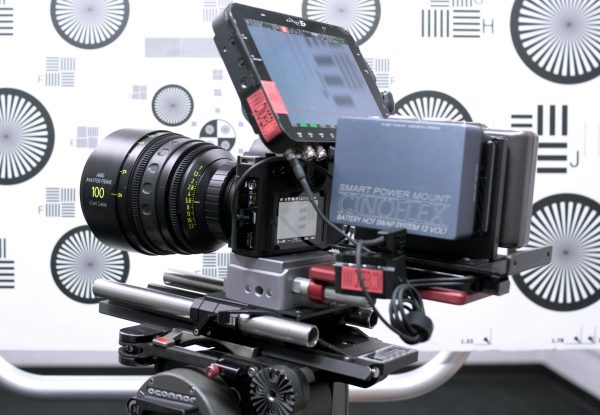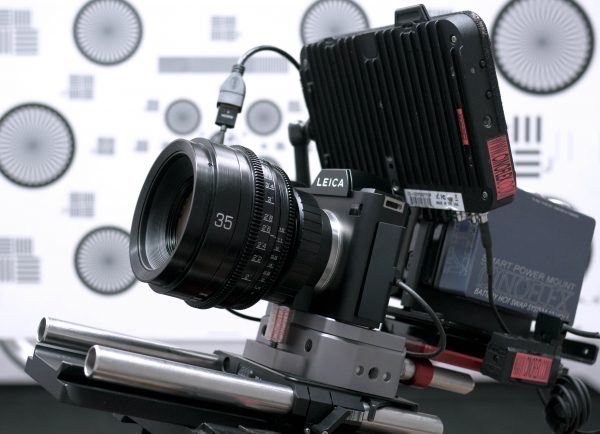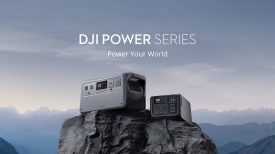Tim Arasheben is a camera operator who has a lot of experience using DSLRs for TV, feature and commercial work. He also runs T M Camera Solutions, the makers of the Cinoflex range of support gear and rigs
He and Director Randall Einhorn devised the plan to shoot the FX TV series “Wilfred” using DSLRs. The sitcom, which ran for four seasons, was shot on cameras like the Nikon D800 and Canon 5D mkIII. Tim’s been in the Union for fifteen years and worked his way up the ranks as camera technician and 1st AC on several well known Hollywood movies. Who better, then, to put the new Leica SL 4K mirrorless camera through its paces at the test bench.

The new Leica and its video quality have been an unknown quantity until now – the camera was launched just a couple of weeks ago. The camera records 4K (DCI and UHD) 8-bit internally in a Super35 crop, but can output 10-bit via HDMI to an external recorder. It can also shoot full-frame in HD (the frame is cropped top and bottom to 16×9), which is super-sampled from the full available pixels. CW Sonderoptic, who build Leica’s cine lenses, took a pre-production version of the camera to Panavision this week to give Tim the chance to test it out. I spoke to him at length about his findings.
The test chart setup was in 5600K artificial lighting. The camera was set in S35 mode at 4K in 24P, 1/50th of second shutter speed and Leica’s own L-Log gamma. ISO was 800 and the output was 4:2:2 10-bit to a Convergent Design Odyssey 7Q recorder. It was rigged on the Cinoflex XLT Camera System. (Note: CW Sonderoptic say that the version of L-LOG that Tim tested is still being tweaked so additional performance should be expected by the time of delivery)
Below is a list of equipment used:
LEICA SL TYPE 601 CAMERA
LEICA PL MOUNT ADAPTER
CINOFLEX XLT CAMERA RIG
ODYSSEY 7Q+ RECORDER / MONITOR
LEICA CINE SUMMILUX 50MM T1.4
ZEISS MASTER PRIME 100MM T1.3
KOWA ANAMORPHIC 40MM T2.4
COOKE SPEED PANCHRO 50MM T2.3
GL OPTICS LEICA “R” VINTAGE 35 T1.4
PANAVISION LEICA “R” 19MM T2.8
PANAVISION LEICA “APO” 280 T3.0
On first inspection Tim was immediately impressed with the image. He described the tonal range as being very smooth and very reminiscent of an ARRI Alexa, with skin tones very subtle and clean out of the box.
Using the L-log gamma he compared the image to the Canon C500 which he has recently used. He estimates that the Leica image had perhaps a stop less dynamic range in the shadows, and between a stop and a stop and a half less in the highlights. Even so, he said the results were impressive.
Tim thought the Leica image was a little softer than that of the Sony a7S and had a smoother tonal range. He said the Sony’s 8-bit colour “tears up a little” and that the 10-bit external output of the Leica was “above and beyond” different.
Rolling shutter seemed to be almost eliminated in S35 mode. In full frame HD mode it seemed similar to a 5D. Noise levels were similar to the a7S and at 3200 ISO he said he would struggle to tell the difference.
One thing that impressed Tim greatly was the overall build quality. The body was incredibly solid and he felt it would withstand a drop or two. The weight was more than an a7S II or GH4, perhaps closer to professional full-frame DSLR. On the base of the camera is a stainless steel tripod socket insert, with a secondary pin hole similar to ones commonly found on the base of camcorders. With the right tripod or adapter plate this can help stop any play or wiggle of the camera. It also mates perfectly with Leica’s SL to PL cine lens adapter to prevent any play occurring. Tim thought that the solidness of the body and the way the sensor is firmly held in place helped to alleviate the impact of rolling shutter effects often seen with other cameras that aren’t so well mounted.

Tim found the control system of the camera to be very intuitive – unlike camera menus on the Sony a7 range. There are not too many menu options and the combination of touchscreen and joystick allow for quick navigation.
The 4.4 million pixel EyeRes viewfinder is another thing Tim was enthused about. He judged it the “best viewing system I’ve seen” on a camera of this type: better than a Sony a7S II, GH4 or even RED bomb. He thinks it is closer to a Sony F55 finder and even comparable to the reflex image of a Canon 5D mkIII – it’s that good.
Other things that he noted included the fact that the full-sized HDMI port on the camera had no issues syncing up to the recorder and simply worked. The battery is a brand new Leica proprietary pack which is taller and wider than a GH4 battery and almost double the size of an a7 battery. He also mentioned that Cinoflex are working on a dummy battery eliminator that will allow the camera to be powered from a P-tap source with an in-line 8.4 VDC regulator.
If you want the ultimate money-no-object multimedia camera for stills and video then, if these early tests are anything to go by, the Leica SL must surely be in contention.
Viewed solely as a video camera at around $8,000 I would question where the camera sits in an already crowded market. If you add a recorder it would bring the price to around $10,000. At this price you can get a RED Raven, Sony FS7, or FS5 and recorder. When I asked Tim if he thought it was worth it he told me: “The image and solid design of the LEICA SL is outstanding; also it’s just a downright attractive product. But who will the eventual end-user be for this camera, I can’t say. I can just test it on an objective basis and give back data.”
Tim will shoot more tests later this month, this time at the Leica store. We look forward to testing the Leica SL for ourselves here at Newsshooter, but it may be some time before we are lucky enough to get our hands on one.





